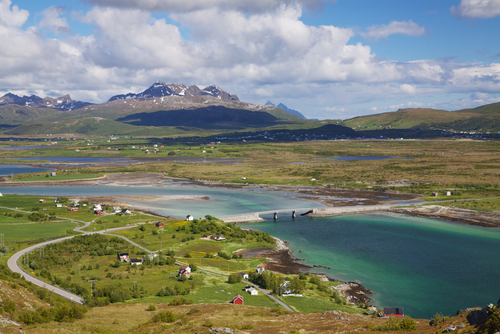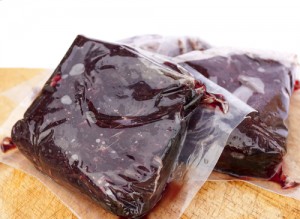I’ve been thinking a lot recently about eating meat–as in, whether it’s a thing I still want to do–and thought now was a good time to revisit this post from two years ago about whale.
 Whales are impressive, enormous, beloved animals. Whaling has been banned since the 1980s, but it still goes on in a few pockets of the world. I spent three years of my life in two of those pockets, Norway and Japan, but somehow had never eaten any whale meat. Until this spring.
Whales are impressive, enormous, beloved animals. Whaling has been banned since the 1980s, but it still goes on in a few pockets of the world. I spent three years of my life in two of those pockets, Norway and Japan, but somehow had never eaten any whale meat. Until this spring.
Over the 17th of May, Norway’s national holiday, I visited my friend Veronica and her family in the Lofoten Islands, an archipelago that extends into the Norwegian Sea north of the Arctic Circle like a cyclist signaling a left turn. It’s a rugged place, an unbelievably beautiful land of green fields and craggy peaks, exposed to the ocean’s storms. It’s a center for fishing and whaling.
The sun was up almost 24 hours a day by mid-May, and we enjoyed a thoroughly pleasant visit. We watched the finals of the Eurovision Song Contest and walked in the 17th of May parade from the school to the church, with everyone in their nicest clothes, including a lot of beautifully embroidered traditional dress.
We ate well while I was there–pizza one day, cod another. On Saturday, the big meal of the day was one of the local specialties: whale meat. Veronica’s husband Dan-Viggo (I love Scandinavian names) cooked it on the grill. It appeared on the table in a pile of very dark matchbox-sized chunks.
 And it tasted…ok. This is no insult to Dan-Viggo’s grilling skills, which I am sure descend directly from the meat-and-fire skills of his Viking ancestors. But whale is lean. Really lean. It wasn’t tough, but it wasn’t juicy, either. I’d always heard that whale tastes like fishy beef, but it didn’t even taste fishy to me. Just meaty. I ate a chunk or two, then moved on to the tasty potatoes and green salad.
And it tasted…ok. This is no insult to Dan-Viggo’s grilling skills, which I am sure descend directly from the meat-and-fire skills of his Viking ancestors. But whale is lean. Really lean. It wasn’t tough, but it wasn’t juicy, either. I’d always heard that whale tastes like fishy beef, but it didn’t even taste fishy to me. Just meaty. I ate a chunk or two, then moved on to the tasty potatoes and green salad.
The meat came from a minke whale, the only species that the Norwegian government has authorized for catching. They’re small baleen whales, about 25 feet long. They aren’t endangered; their status on the IUCN’s international list is the mildest, “Least Concern.” Norway’s fisheries agency sets a quota every year. For the past few years it’s been 1,286 whales, but they catch about 400 to 600 a year.
So why don’t most people in the world eat them? It’s not just because some whale species are rare; we eat plenty of endangered fish, and someone is going to pay a lot of money to eat the world’s last bluefin tuna. And it’s not just because they’re intelligent mammals–look at pigs.
I suspect it’s partly because different people are horrified by different meat. Pig meat clearly divides the world’s population. In Japan, I tried raw horse, which tasted fine, but, ewwww. On the other hand, I love reindeer—another Scandinavian free-range meat—and the idea of eating it is horrifying to a lot of people who were raised on Rudolph. It seems like the only consistent route is to avoid eating animals entirely, and I’m not ready to do that.
Veronica had asked me earlier in my stay if I’d eat whale–a lot of tourists won’t, she said–and I said sure. I’ve spent a lot of time thinking about sustainable fisheries and why people eat whale, and I thought I should try it myself. But when I was back in Norway a few weeks later, at a pub with whale steaks on the menu, I skipped the marine life and got a regular old burger.
Photos: